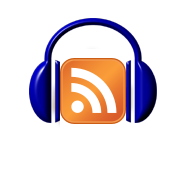Instructional design/Ed Podcasts/Podcasting and Educational Podcasting
| Educational Podcasts Introduction | Podcasting and Educational Podcasting | The Art and Science of Writing Audio Scripts | Audio Scripts Pitfalls | Assessment | Summary |
Podcasting
[edit | edit source]
Let’s start with the basics. So what’s a podcast?
The relatively new word comes from the combination of "broadcast" and "pod" (as in iPod), and is generally used to refer to a digital audio file that can be played, and/or saved for playback, on one’s computer as a well as a range of portable devices (e.g. smartphones, tablets and, of course, the iPad and iPods).
Everyone, institutions-schools, individual teachers, and students can play, record and share a podcast! But not everyone always does it right and that’s why I created this tutorial.
Educational Podcasts
[edit | edit source]Educational podcasts are best seen as a tool within an array of instructional tools. You should generally not aim to deliver an entire instructional module via a podcast for two reasons:
- First, different learners have different needs and learning styles, and some learners may not be comfortable with learning that is solely based on audio instruction.
- Second, the complementary use of different instructional modalities (text, graphics, video and audio) will usually yield a more appealing, engaging and effective instruction compared with modules that rely solely on one modality.
Educational podcasts are not inherently or necessarily different from non-educational podcasts but they do have at least two key differentiating attributes:
- Purpose: The primary goal of an educational podcast, as with almost everything else we do, is to facilitate learning (rather than merely entertain or inform)
- Target audience: The primary audience of any educational podcast are learners/students who rely on these podcasts to bolster their learning
As a result of these two attributes, educational podcasts must generally comply with many of the key principles of effective instructional design and teaching (e.g. making sure to start by capturing learners’ attention, tying new information to previously learned content, chunking etc.).
However, since podcasts are exclusively audio-based, three instructional design principles are especially critical, and must be implemented within every educational podcast: Clear Objectives, Systematic Organization, and a Call for Action (a sort of practice opportunity).
Clear Objectives:
As aforementioned, an educational podcast cannot generally serve as a complete, standalone, instructional module and is better seen as a supporting element within a larger module. While this overarching module will naturally include the overall learning objectives of the module, also each educational podcast (like other key instructional elements), must start by clearly communicating to the listeners, your learners, the podcast’s focus and aim/s.
Thus, be sure to start your educational podcasts by clearly stating what you will be talking about and what the students will gain from listening to it.
Systematic Organization:
Educational podcasts, especially when regularly used, should generally follow a predictable and systematic structure and style. Furthermore, your overall structure, and even style, needs to be clearly communicated to the learners: Give them a brief outline of your entire podcast at the very beginning. Similarly, if, for example, you are going to use a certain sound effect when moving from one topic to another, let them know that you are going to use that particular sound effect for that particular purpose. Think of these systematic structure and style as a form of ‘educational branding,’ which is meant to make your final product feel more comfortable and familiar (i.e. clear). Unlike regular podcasts, however, certain structures and styles are inappropriate: Educational podcasts cannot afford to be enigmatic or erratic, for instance. Similarly, while sound effects or music can generate interest, and keep listeners engaged, they should be used sparingly and only in support of the message. Otherwise they may become a distraction.
Thus, be sure to maintain a certain level of predictability in your podcasts. Getting learners’ engaged and interested is important but getting your message across in a clear manner is paramount.
Call for action:
Checking students’ comprehension and practice opportunities are obviously key instructional principles but many feel that podcasts cannot apply these principles because you cannot observe your students while they are listening/interacting with your podcast. In reality, however, you should strive to incorporate these principles in almost every educational podcast you produce specifically because you cannot see your students. This is best accomplished via a specific/clear call for action - at some point - of each and every educational podcast you produce (e.g. ‘now pose and complete the following task’). This will not only afford your learners a much needed reflection time and practice opportunity but also demonstrate to you, the teacher, whether or not your learners are actually listening and understanding your message. For this reason, you should also consider changing the location of your call for action, and place it at different points of each podcast, as a way to ensure that your learners do listen to each podcast in its entirety.
Thus, be sure to confirm that your students are listening and understanding your message by incorporating a clear call for action (i.e. a task which requires an observable product) at ‘some point’ of each of your educational podcasts.
Next Step
[edit | edit source]Now that you have gained a better understanding of what is an educational podcast, you are ready to move to the next step within this tutorial: The art and science, of writing audio scripts.
| Educational Podcasts Introduction | Podcasting and Educational Podcasting | The Art and Science of Writing Audio Scripts | Audio Scripts Pitfalls | Assessment | Summary |
